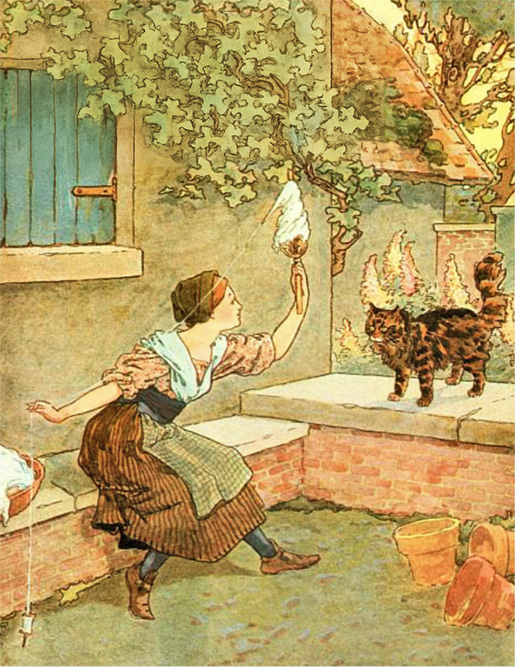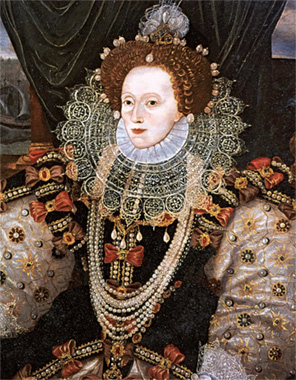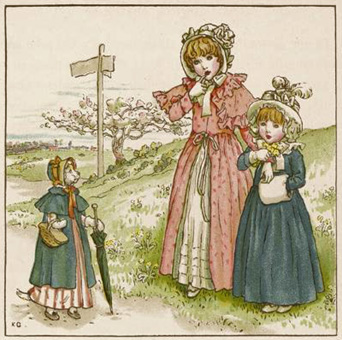Pussy Cat, Pussy Cat
Pussy cat, pussy cat, where have you been?
I've been to London to see the Queen.
Pussy cat, pussy cat, what did you there?
I frightened a little mouse under the chair.

Origins
 The first printed version pops up around 1805 in Songs for the Nursery. But the rhyme was almost certainly older. Some people tie it all the way back to Elizabeth I in the late 1500s, with a story that a cat sneaked into court, ignored the Queen, and went straight after a mouse. True or not, the rhyme has carried that royal flavor ever since.
The first printed version pops up around 1805 in Songs for the Nursery. But the rhyme was almost certainly older. Some people tie it all the way back to Elizabeth I in the late 1500s, with a story that a cat sneaked into court, ignored the Queen, and went straight after a mouse. True or not, the rhyme has carried that royal flavor ever since.
Unlike many nursery verses that morphed over time, this one hardly changed at all. What you read today is almost exactly what children heard two hundred years ago. That kind of stability is rare.
Meaning
The fun is in the contrast. The cat claims to travel for something grand — a royal audience — but when asked what happened, the big memory is a mouse. Of course it is. That’s what cats do.
There’s a sly little lesson here: no matter how grand the setting, instinct wins. The palace fades, the Queen fades, the cat just wants the mouse. Children get it immediately, which is why the rhyme stuck.
Cultural Background

Cats, queens, London — three easy images to hang a picture on. Victorian illustrators went wild with it. They drew fluffy cats padding across royal rugs, peeking around chairs, or crouched ready to pounce while a bemused Queen looked on.
The rhyme spread outside Britain, but it always carried that distinctly English flavor. A simple joke with a royal backdrop — perfect for reciting, easy to illustrate.
Legacy
“Pussy Cat, Pussy Cat” is still everywhere: in rhyme collections, in picture books, in classrooms. It’s been sung, painted, acted out. What keeps it alive is the punchline. The cat could have told stories of London, of guards and trumpets and crowns. Instead, it’s the mouse. Always the mouse.
And maybe that’s why it lasts: it’s funny, it’s true to life, and it’s only four lines long.